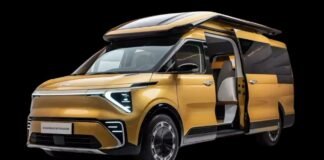Mitsubishi should be the most dominant Japanese automaker. Mitsubishi Motors ranked as the 6th largest Japanese automaker in 2011. However, since the Renault, Nissan, and Mitsubishi alliance was formed in 2016, it seems like the company disappeared. Apart from the occasional crossovers, there hasn’t been anything new and exciting from Mitsubishi. Yes, the company fell off that hard! So, why did this happen? Stay tuned, because this is the Mitsubishi history of what could have been!
Once upon a time in the past when Mitsubishi took the world by storm and had a successful run not just selling cars but also in motorsports and movies. First up, the Lancer 1600 GSR. This was the grandfather of the iconic Lancer Evolution rally car that went on to dominate the Group A era and, in doing so, placed Mitsubishi on the map of building highly reliable cars that could take on the world’s toughest roads. To earn the title of “King of Cars” in Africa, the Lancer 1600 GSR won the Safari Rally Kenya twice in the 70s.
Then came the Starion in the 1980s. This car caused a stir in the international market because people believed that the Japanese had trouble saying the word ‘Stallion’ when naming the car. Definitely not the case this time around. The nameplate is actually a combination of the word “Star” and the mythical horse “Arion” in Greek mythology. Aside from the name, The Starion became popular for other reasons as it enjoyed a lot of success during its run as a Hollywood hero car. Despite being one of the first Japanese turbocharged sports cars that came fully equipped with an electronic fuel ignition, the Starion went on to win in the SCCA.
Another iconic model is the FTO, Mitsubishi’s offering as the middle ground between the Eclipse and the 3000GT. The FTO was a front-wheel-drive, MIVEC V6-powered two-door coupe that was produced from 1994 to 2000. Of course, this list would not be complete without the Eclipse. Need For Speed Underground, The Fast and The Furious, Gran Turismo, you name it. The Mitsubishi Eclipse had mass appeal due to these games and movies. Then the most technologically advanced car of its time, The 3000GT with its active aero and four-wheel-drive and twin-turbos that keeps everyone talking.
Another iconic model is the acclaimed Mitsubishi “King of the Desert”, the Pajero. The legendary Pajero SUV is so powerful that it went on to conquer the world’s toughest motor race, the Dakar rally, a total of 12 times. The Galant VR-4. This car was the first to receive the legendary 4G63T engine, along with an all-wheel drive system. This car became a perfect example for a car that was introduced in the 80s, with an advanced sedan that was both sporty and comfortable. Mitsubishi has an outstanding model of all time with one of the best all-wheel-drive, it is none other than the LANCER EVOLUTION! This model has stood the test of time, and it still stands as one of the best all-wheel-drive cars of all time. The Lancer Evolution X Final Edition, released in 2016, marked the end of the road for the legendary model. And these are just a few of the best, so how did it all begin?
The origin of Mitsubishi can be traced to its roots far back to 1870 when it was just a shipping firm founded by Yataro Iwasaki. He started this shipping firm with just three old steamships, but his younger brother, his eldest son, and his nephew would expand the business into other fields during their individual tenures as the company’s president, such that they were setting the foundation for the Mitsubishi automobile company. The name “Mitsubishi” is derived from two Japanese words, with “Mitsu” meaning three, and “Hishi” meaning the rhombus or diamond shape. Naturally, this name birthed the three rhombus shapes of the Mitsubishi logo.
The productivity of the company began to increase and their services gradually diversified into other businesses all related to shipping. It was only a matter of time before they started making their own ships. By 1910s, you could say there was a newly industrialized Japan; the next biggest thing was cars. In 1917, The company made the switch and introduced its first car, the Mitsubishi Model A. Did you know it was a hand-built luxury car? It was quite expensive but still couldn’t compete against foreign imports, so the production of the Model A stopped five years later. Mitsubishi tried again in 1934 with the four-wheel drive PX33. The car was commissioned by the militaristic Japanese Government for its war effort against China. During this manufacturing process, four prototypes were made; but the car never made it into production. But it wasn’t an all-round failure though. Mitsubishi might not have figured out cars, but they already had fully operational buses to their name. The presence of the Second World War, which spanned from 1939 to 1945 which brought the world to a halt, but when it was done, production continued. The company introduced the Silver Pigeon scooter in 1946 and then the small three-wheeled cargo vehicle called the Mizushima in 1947. Also, around this time, the now dormant Mitsubishi aircraft factory began producing car bodies for the companies that we know today as Nissan and Toyota. By 1950, Mitsubishi was a large industrial and family-run business. This made the allied powers that occupied Japan after the war nervous. Hence the company was split up in 1950 into three companies; the East, the West and the Central Japan Heavy Industries. These companies also made deals with American companies in order to weather the storm. By 1952, the occupation of Japan came to an end, but the three companies remained separate until 1964, when they merged into one to form Mitsubishi Heavy Industries Ltd.
The company’s first mass-produced car was the Mitsubishi 500 and it was introduced in 1960. Just like the competition, Mitsubishi focused on small, economical cars that even the Japanese middle class could afford. Mitsubishi entered the 500 into the Macau Grand Prix in 1962. And this car took the top 4 spots for the under 750cc category. This was the first sign of Mitsubishi’s future in motorsports dominance. Mitsubishi gradually gained a reputation for not just being a good deal but also for being tough and reliable. Unfortunately, this is not a smooth sailing story of success. While Mitsubishi would go on to create innovative and exciting models in the years that followed, they would also make a couple of mistakes along the way that affected the company in the long run.
Mitsubishi cars battled other automakers like Honda, Nissan and Toyota for dominance on home territory, but soon they began to look for ways to enter the international market. Now, while the other three companies borrowed money to fund their international expansion, Mitsubishi decided to collaborate with foreign automotive partners to limit their financial risk. Two seemingly good ideas, but one was better. You see, the other companies that took out loans were able to penetrate the export market while being able to keep and push their original brand name. On the other hand, the brand name Mitsubishi got watered down due to a series of too many partnerships and collaborations. Of course, it happened gradually so the company did not realize its mistake until it was too late. The first partnership would be with America’s number 3 car producer, Chrysler. Mitsubishi split off its automotive division into a separate company, Mitsubishi Motors, and sold 15 percent of it to Chrysler. Marking the start of a long-lasting alliance sometime in 1970. Chrysler’s worldwide market reach instantly skyrocketed Mitsubishi’s exports, and the partnership delivered on everything that it was supposed to for both parties. Mitsubishi was now in the foreign market, while Chrysler could get a car of any kind they wanted to be built and designed by Mitsubishi. Mitsubishi launched the entry-level and first-generation Dodge Colt in 1971. It is believed that this car was Chrysler’s answer to the popular Pinto model by its local competitor Ford. Again, we would mark this as another one of Mitsubishi’s mistakes.
During the years that followed, Mitsubishi would churn out car after car that could compete with what Chrysler deemed the most popular cars rather than focus on establishing its own Mitsubishi brand. By 1980 Mitsubishi was making about 1 million cars every year; everything was going well until tension began to grow in their partnership with Chrysler. There were so many managerial differences but with Chrysler having a stake in their company, there wasn’t much they could do. A little hope came when Chrysler was heading for bankruptcy. They began to sell off parts of their businesses. Mitsubishi took advantage of this and bought out Chrysler’s Australian business. With this newfound autonomy, Mitsubishi was able to start selling in the US market under their own name. Although Mitsubishi was offering more than just the regular economy cars, they didn’t do as well as they hoped they would. You see, Mitsubishi was late to the party. Honda, Nissan and Toyota had been selling cars in North America for well over a decade and in that time, they had established a fail-proof dealer network from coast to coast. On the other hand, Mitsubishi was entering the US market with just 70 dealers in only 22 out of the 50 states. To make things worse, the company’s focus on expansion to the US had led to other Japanese automakers dominating the European market that they had penetrated early on. This didn’t stop production though. By 1990, Mitsubishi was making all kinds of vehicles; they had mass-market cars like the Mirage, SUVs, sports cars and even luxury cars. Production of cars had increased to about 1.5 million per year, not to mention its trucks and buses. Again, Mitsubishi would make the mistake of reacting to the new models of its Japanese competitors. By producing cars that could rival every other big Japanese automaker, Mitsubishi was spreading itself thin in the process. Although this continued into the 2010s, Mitsubishi still occasionally released some top-quality models. Unfortunately, their annual sales never got over 11,000, and by the first half of 2014, they sold only 1,700 units worldwide. The company’s production in Western Europe ended in 2012, while US production ended in 2015.


